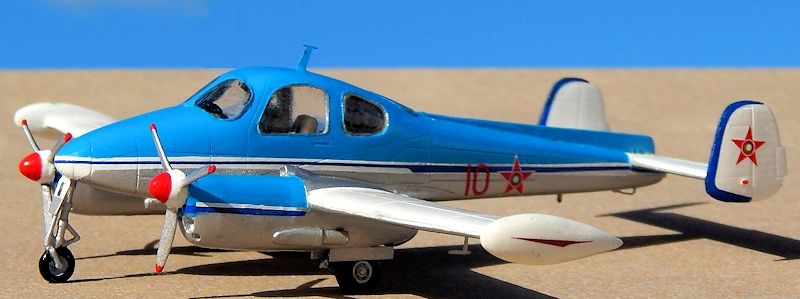
AZ Models 1/72 Let L-200 Morava
| KIT #: | AZ 7352 |
| PRICE: | 16 Euros |
| DECALS: | Four options |
| REVIEWER: | Carmel J. Attard |
| NOTES: | Short run with resin and photo etch parts. |

| HISTORY |
The Let L-200 was a twin-engine 4/5 seat
business aircraft designed by Ladislav Smrcek.
The L-200 prototype flew for the first time on the 8th of
April 1957. A low wing monoplane with fixed wing tip fuel tanks and had a twin
tail unit.
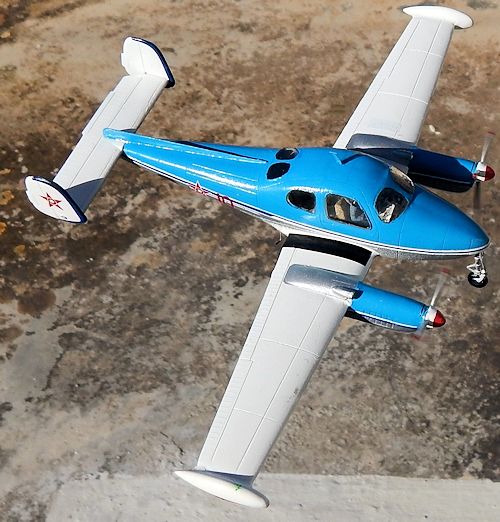 The landing gear was a retractable tricycle
type and was powered by two160 hp Walter Minor 6-111 inline engines. The
production model was generally similar to the prototype and had more powerful
M337 engines. The final production version was L-200D which differed by
incorporating improved systems with strengthened landing gear, 3-blade constant
speed propellers V-506, modified in accordance to Russian Aeroflot demands where
many being supplied for this airline operations in the Moscow and Ukrainian
Directorate Areas.
The landing gear was a retractable tricycle
type and was powered by two160 hp Walter Minor 6-111 inline engines. The
production model was generally similar to the prototype and had more powerful
M337 engines. The final production version was L-200D which differed by
incorporating improved systems with strengthened landing gear, 3-blade constant
speed propellers V-506, modified in accordance to Russian Aeroflot demands where
many being supplied for this airline operations in the Moscow and Ukrainian
Directorate Areas.
In all 367 L-200 s were built by 1964,
including three prototypes and 197 L-200D. 8 early L-200A and the prototype were
converted to L-200D as well. Libis in Yugoslavia manufactured 5 Aircraft from
parts. 4 Let L-200Ds were delivered from the manufacturer in 1964 for the
utility transport role with the Bulgarian Air Force. Serial 05 was delivered in
1964 and stored at Dubroslavtzi in 1995, Serial 10 No 171310 delivered in 1964
and preserved at Plovdiv/Krumovo, October 2004, Serial 20 No 171202 delivered in
1964 and stored at Plovdiv/Krumovo, October 2004 in Production of the L-200
Morava ended in 1968.
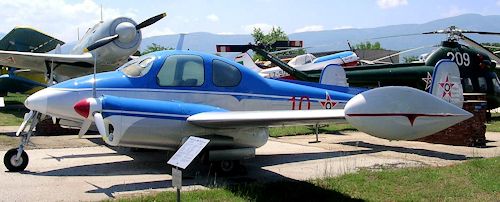 On 18th June 2013 I visited the
open air Krumovo museum in Plovdiv and there I spotted the rare exhibit L-200D
serial 10 in freshly renovated livery with BAF earlier style star insignia
markings. I noticed that there was a slight variation in the narrow trim line
that runs along the fuselage and along the engine nacelles. This was now also
bright medium blue like the rest of the upper fuselage and not dark blue as it
was in earlier times as it appears in the AZ kit decal.
On 18th June 2013 I visited the
open air Krumovo museum in Plovdiv and there I spotted the rare exhibit L-200D
serial 10 in freshly renovated livery with BAF earlier style star insignia
markings. I noticed that there was a slight variation in the narrow trim line
that runs along the fuselage and along the engine nacelles. This was now also
bright medium blue like the rest of the upper fuselage and not dark blue as it
was in earlier times as it appears in the AZ kit decal.
| THE KIT |
| CONSTRUCTION |
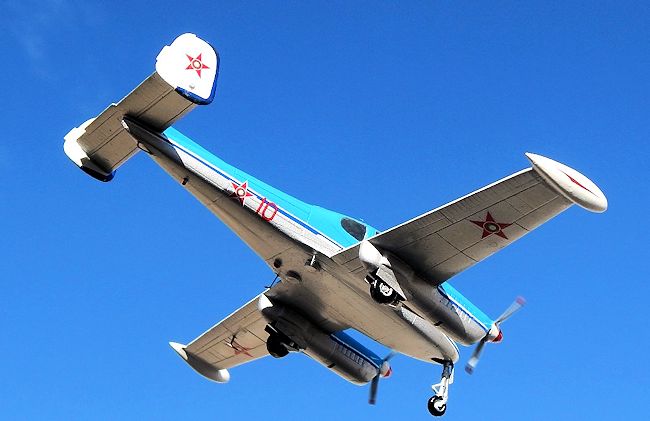
The wings consisted of two upper and two lower
parts and a separate molding for underside of engines. Everything went together
well and fit was good on most parts. Only a little filler was needed between
fuselage and wings. Construction took very little time but there were one or two
hidden surprises that were worth noting. The kit is tail heavy and weight was
added to nose and spaces in the engine nacelles separate forward parts. The
engine fronts are resin and when these were fixed with the rest of the engines,
filler was needed for smooth fairing.
The
cockpit canopy itself needed to be dry fit so that small fins are removed by
scraping or smooth filing. I then used Klear to fix the clear parts permanently
and without spoiling the clear transparencies. I also added two crew figures
from spares box to the front seats and straps to all seats.
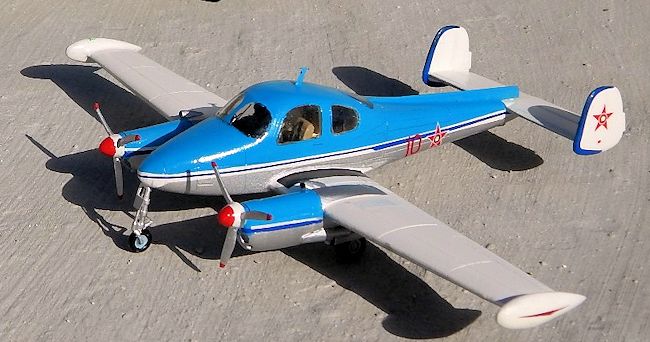 When it comes to the stage of assembling the
engine nacelles and add the air intake scoops and exhaust pipes the instructions
are confusing. For instance the front view on sketch at stage 10 the air intake
part No18 appears on the inner wall of each nacelle while plan view on last page
of instructions shows them on the outside in each case in plan view. This in
fact should be on starboard side on each nacelle. The same apply for the engine
exhaust. The instructions show that they are fitted on the outside of each
nacelle. The exhausts should in fact be positioned on the port side of each
engine nacelle.
When it comes to the stage of assembling the
engine nacelles and add the air intake scoops and exhaust pipes the instructions
are confusing. For instance the front view on sketch at stage 10 the air intake
part No18 appears on the inner wall of each nacelle while plan view on last page
of instructions shows them on the outside in each case in plan view. This in
fact should be on starboard side on each nacelle. The same apply for the engine
exhaust. The instructions show that they are fitted on the outside of each
nacelle. The exhausts should in fact be positioned on the port side of each
engine nacelle.
| COLORS & MARKINGS |

| CONCLUSIONS |
All
in all this was a fairly easy kit build of a subject not so popular.
The kit is also a bit overprized but would generally appeal to many
particularly those keen on modern types in Bulgarian Air Force and makes a
change from the usual Mig 17, 21 and 23 etc. that are normally associated with
this air force in post war era.
January 2014
If you would like your product reviewed fairly and fairly quickly, please contact the editor or see other details in the Note to Contributors.